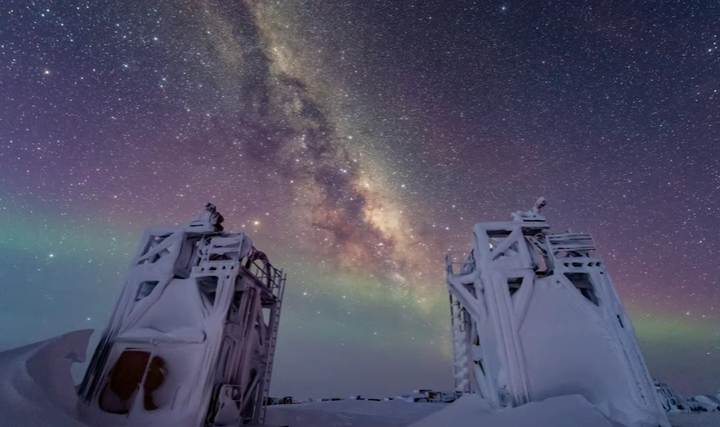
A major breakthrough has been recorded by scientists after they've watched a high-energy particle speed through the Earth. The said particle fell towards Earth back in December 2016, making its way from space almost the speed of light.
As the high-energy particle flew into Earth, it hit an electron buried inside an ice sheet at Antarctica, thus producing a particle that decayed into a host of secondary particles.
Particle recorded by the IceCube Neutrino Observatory
The particles were picked up by the IceCube Neutrino Observatory, a unique massive telescope buried underneath the Antarctic surface.
The once-in-a-lifetime event was captured by the equipment and is known as the Glashow resonance event. This kind of event had been predicted but had never been captured before, and finally, thanks to the huge telescope, scientists can now observe the particle and confirm the deepest foundations of physics.
Also Read: NASA Scientists Might Have Found a Parallel Universe 'Next to Ours' After an Antarctica Experiment
This would mark the first time that an individual neutrino has been proven to have been of astrophysical origin.
This shows that the IceCube equipment in the observatory, which is made up of a series of sensors that are submerged under the ice, can help examine the universe, according to NewsBreak.
Glashow event
The Glashow event came from Sheldon Glashow, a Nobel laureate physicist who predicted that a high-energy particle would fly by Earth back in 1960, according to IAEA.Org.
In a paper that was published during his research when he stayed in Denmark, Glashow suggested that in the right conditions, an antineutrino could interact with an electron to create a never-before-seen particle through a process called resonance.
The particle that Glashow talked about in 1960 was discovered in 1983 and was named the W boson. It was also much heavier than what scientists had anticipated--meaning, by producing it artificially, it would require so much energy.
The production of the particle would also need a neutrino with an energy more than 1,000 times more powerful than can be produced in the European Council for Nuclear Research or CERN's Large Hadron Collider.
However, researchers suggested that it could be possible to use space as a natural accelerator.
There are extreme cosmic events like black holes and other objects in space, and that itself can generate the needed energy.
According to researchers, the energetic antineutrino that shot through Earth in 2016 may have been sent towards Earth by a black hole or other objects in space that has the energy needed by the particle.
Francis Halzen, a professor of physics at the University of Wisconsin-Madison, the headquarters of IceCube maintenance and operations, and principal investigator of IceCube, said that when Glashow was a postdoc at Niels Bohr, he never imagined that his proposal for producing the W boson would be realized by an antineutrino from space crashing into Antarctic ice.
The research was published in Nature titled "Detection of a particle shower at the Glashow resonance with IceCube."
The research pointed out that the Glashow resonance evidence proves there is a presence of electron antineutrinos in the astrophysical flux. It also provided validation of the standard model of particle physics.
Related Article: NASA Discovers Active Asteroid That Vomits Small Rocks Into Space
This article is owned by Tech Times
Written by Sieeka Khan
ⓒ 2025 TECHTIMES.com All rights reserved. Do not reproduce without permission.




